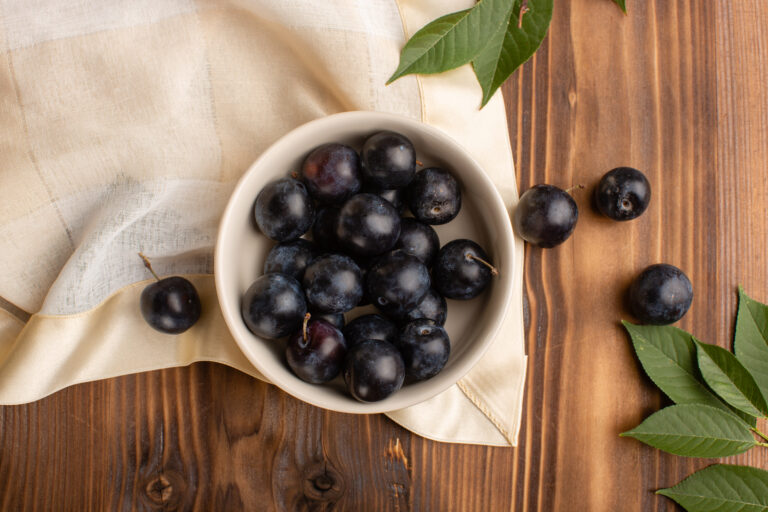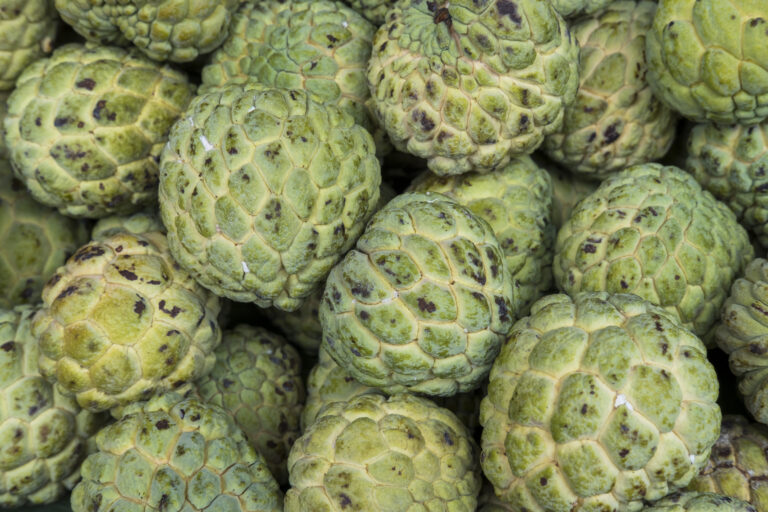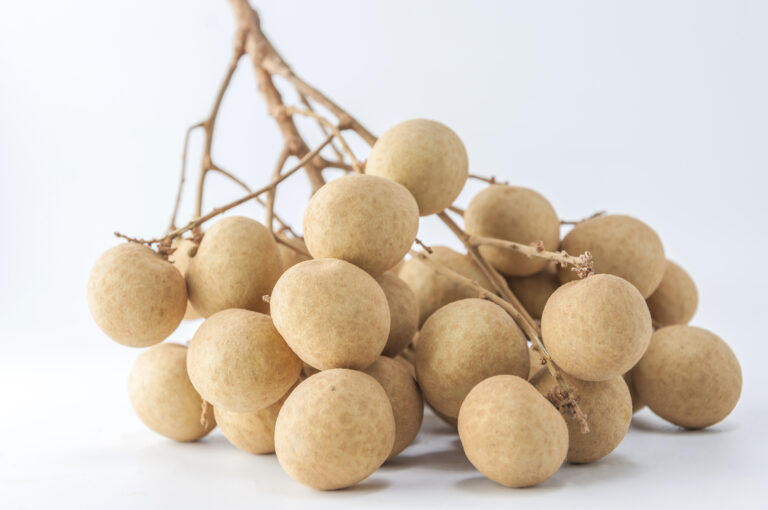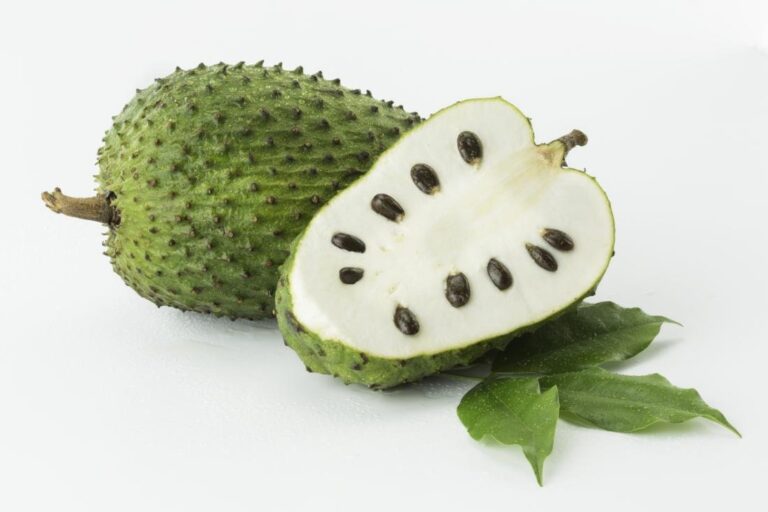Overview
Kumquat fruit is scientifically known as Fortunella, is a small, citrus fruit that belongs to the Rutaceae family.
Unlike most citrus fruits, kumquats are unique in that their peel is sweet and edible, while the flesh inside is tart. Native to Southeast Asia, kumquats are now cultivated in various parts of the world, including China, Japan, the United States, and Europe.
The kumquat tree is relatively small, reaching heights of 8 to 15 feet (2.5 to 4.5 meters). The fruit itself is usually round or oval, with a diameter ranging from 1 to 2 inches (2.5 to 5 centimeters). There are several varieties of kumquats, but the two most common types are the Nagami and the Marumi.
The Nagami kumquat fruit is the more widely recognized variety. It is oval-shaped and has a bright orange color. The peel is sweet, and the pulp inside is quite tart.
When eaten whole, the contrast between the sweet peel and the tangy flesh creates a delightful burst of flavor. Some people enjoy eating kumquats fresh, while others use them in various culinary applications.

5 Healthy Benefits of Kumquat Fruit
Kumquats are not only delicious but also offer several health benefits. Here are five reasons why incorporating kumquat fruit into your diet can contribute to a healthier lifestyle:
1. Rich in Vitamin C
Kumquats are a fantastic source of vitamin C, a powerful antioxidant known for its immune-boosting properties. Vitamin C helps protect the body against infections, supports the health of the skin, and aids in the absorption of iron. Consuming kumquats can contribute to maintaining a strong and resilient immune system.
2. Dietary Fiber Content
Kumquat fruit is high in dietary fiber, which is essential for digestive health. Fiber promotes regular bowel movements, helps prevent constipation, and supports a healthy gastrointestinal system. Including kumquats in your diet can contribute to improved digestion and overall gut health.
3. Antioxidant Properties
The antioxidants found in kumquat fruit, including flavonoids and carotenoids, help neutralize free radicals in the body. Free radicals are unstable molecules that can cause cellular damage and are associated with various chronic diseases and aging. By consuming foods rich in antioxidants, such as kumquats, you may help protect your cells from oxidative stress.
4. Low in Calories, High in Nutrients
Kumquats are relatively low in calories but pack a nutritional punch. They provide essential nutrients like vitamin C, potassium, and various B vitamins without adding a significant amount of calories to your diet. This makes kumquats a nutrient-dense snack option, ideal for those looking to maintain a balanced and healthy diet.
5. Supports Heart Health
The combination of dietary fiber, antioxidants, and potassium in kumquats contributes to heart health. Fiber helps manage cholesterol levels, while potassium helps regulate blood pressure. Additionally, the antioxidants in kumquats may contribute to reducing the risk of cardiovascular diseases by protecting the blood vessels from damage.
It’s important to note that while kumquats offer these health benefits, a well-rounded and balanced diet, along with a healthy lifestyle, is key to overall well-being.
Nutritional Content of Kumquat Fruit
Certainly! Here is an overview of the nutritional content of kumquat fruit per 100 grams:
- Calories: Approximately 71 kcal
- Water Content: About 80%
- Carbohydrates: Around 16.9 grams
- Sugars: Approximately 9.4 grams
- Dietary Fiber: Roughly 6.5 grams
- Protein: About 1.9 grams
- Fat: Approximately 0.9 grams
Vitamins:
- Vitamin A: Approximately 290 IU (International Units)
- Vitamin C: Roughly 43.9 milligrams
Minerals:
- Potassium: Approximately 186 milligrams
- Phosphorus: Roughly 12 milligrams
- Calcium: Around 62 milligrams
- Magnesium: Approximately 20 milligrams
Kumquats offer a variety of essential nutrients. They are particularly rich in vitamin C, providing a significant portion of the recommended daily intake in a small serving.
How to Eat Kumquat?
Certainly! Here are four ways on how to eat kumquat:
- Eat Fresh: Enjoy kumquats fresh by washing them thoroughly and eating the entire fruit, including the peel. The sweet skin and tart flesh create a unique flavor profile. Make sure to chew the kumquat thoroughly to fully experience its taste.
- Slice for Salads: Slice kumquats into thin rounds and add them to salads. The sweet and tangy flavor of kumquats can enhance both green salads and fruit salads, providing a refreshing and zesty element to your dish.
- Candied Kumquats: Preserve kumquats by candying them. Simmer the fruits in a simple syrup made of water and sugar until they become translucent. Candied kumquats can be enjoyed on their own as a sweet treat or used as a topping for desserts.
- Bake into Recipes: Incorporate kumquats into your baking endeavors. Chop or slice kumquats and add them to muffins, cakes, or tarts. The natural sweetness of kumquats can enhance the flavor of your baked goods, providing a delightful citrus twist.
These methods offer versatile ways to enjoy kumquats, allowing you to appreciate their distinctive taste in various culinary applications.
I hope you got the answer to your query ( Kumquat fruit). Also, check out The Healthy Benefits of Loquat.













